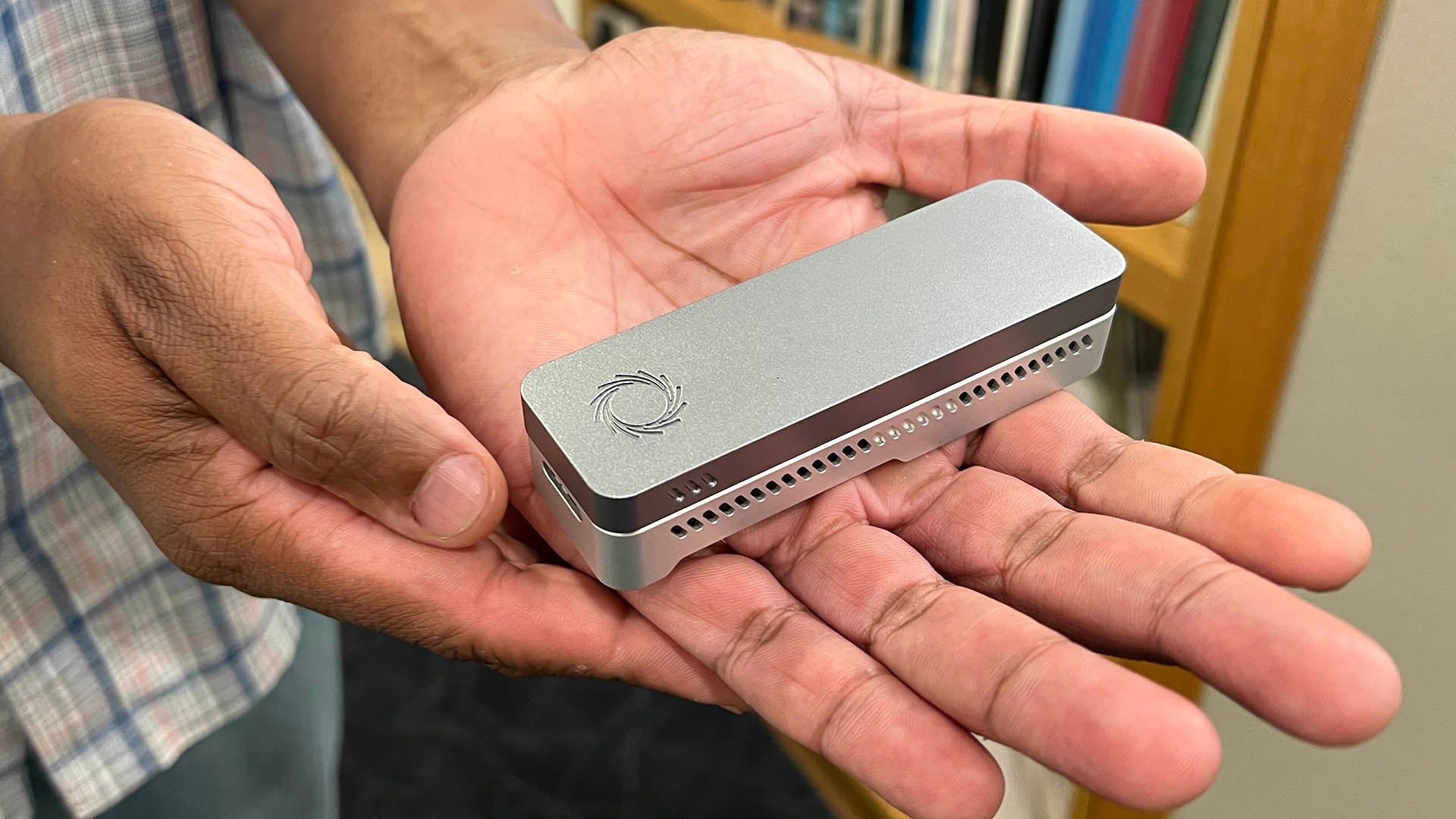Once, sequencing the human genome was considered a far-off monument of scientific achievement. The Human Genome Project, which got its start at Cold Spring Harbor Laboratory (CSHL), was the work of thousands of scientists across the globe. After more than a decade and $3 billion in costs, the first draft of the human genome sequence was released in 2001. Now, CSHL will help make that achievement something any high school student can do.
On August 24, the CSHL DNA Learning Center (DNALC) announced a collaboration with Oxford Nanopore Technologies. Together, DNALC and Oxford Nanopore will develop educational infrastructure and resources with the potential to make in-class DNA sequencing routine.
“Oxford Nanopore’s portable, low-cost sequencing technology was created to make DNA analysis possible for anyone, anywhere,” says DNALC Assistant Director for Diversity and Research Readiness Jason Williams. “DNALC and Oxford Nanopore are showing that college and pre-college students and educators are a big component of this effort.”
Nanopore sequencing is a powerful lab technique that allows for mobile testing and rapid processing. For three years, the DNALC has been examining its potential use in the classroom. The DNALC recognized the technology could prove especially valuable for kids from schools that lack the resources of larger universities. In response, the DNALC’s Sequence a Genome summer camp has begun introducing nanopore sequencing to students in grades 11-12. Additionally, DNALC now offers workshops to train local educators on this technology.
Dave Micklos is the DNALC’s founder and executive director. “On-demand DNA sequencing in schools is one of the greatest unmet needs in bioscience education today,” he says. “CSHL is proud to work with Oxford Nanopore Technologies to meet this challenge.”
The DNALC was established in 1988 as the world’s first science center devoted to public genetics education. DNALC has locations throughout New York, in Cold Spring Harbor, Manhattan, Brooklyn, and Sleepy Hollow.
Oxford Nanopore’s technology helped to assemble the first complete human genome in 2022. The technology has also been instrumental in monitoring outbreaks among both plants and humans.
Along with the DNALC collaboration, Oxford Nanopore has launched a new program called Education Beta. The program aims to build an educational community around nanopore sequencing technology. Teachers who would like to participate may now register online.
Written by: Samuel Diamond, Editorial Content Manager | diamond@cshl.edu | 516-367-5055

